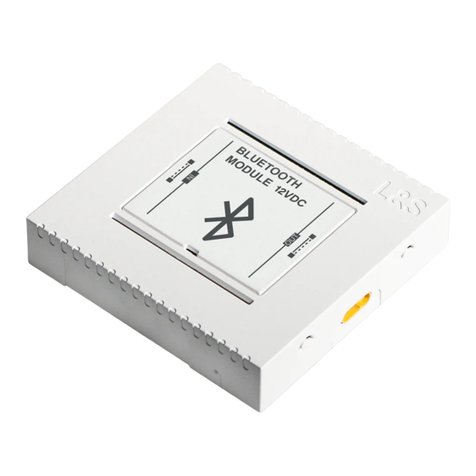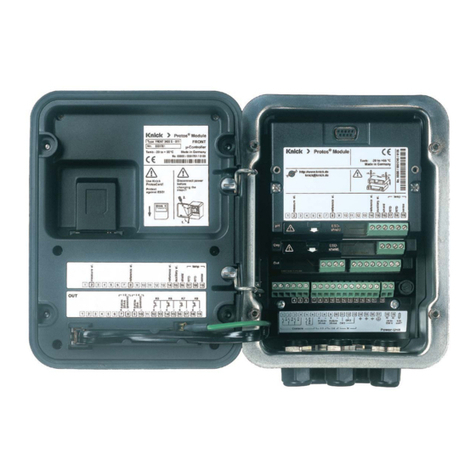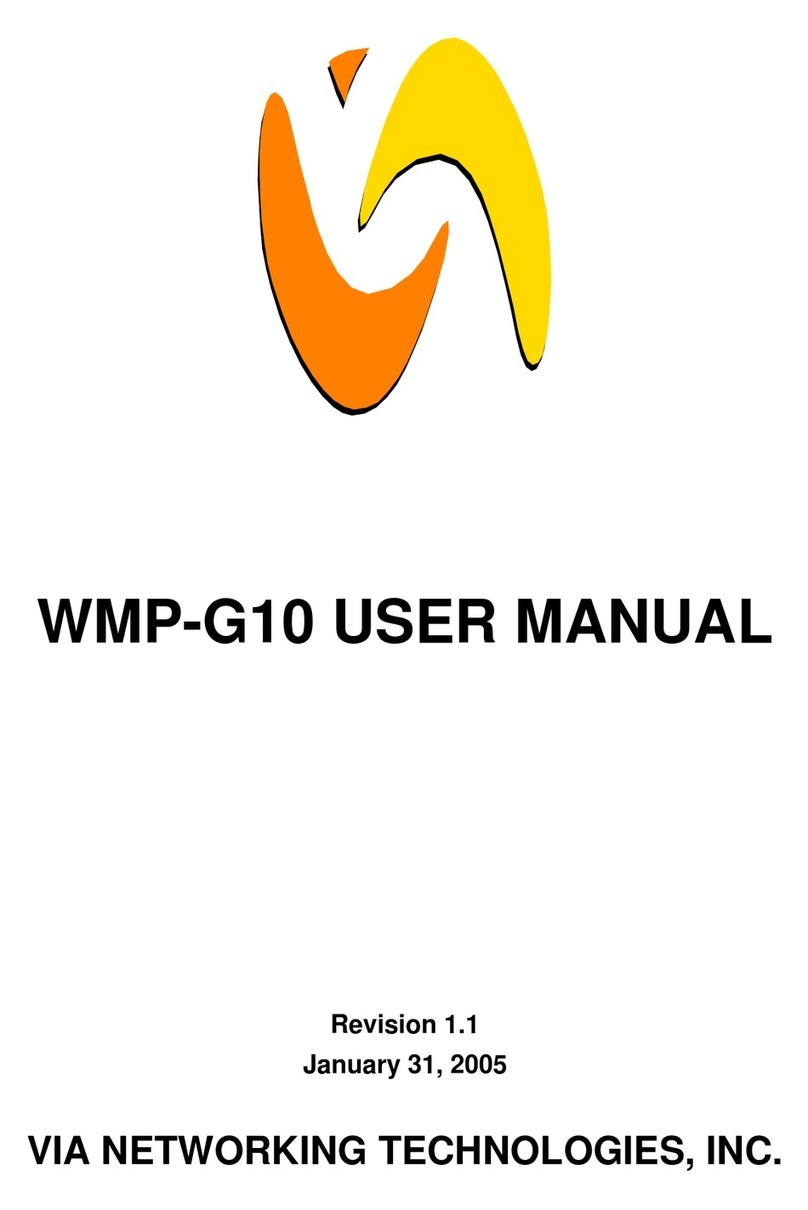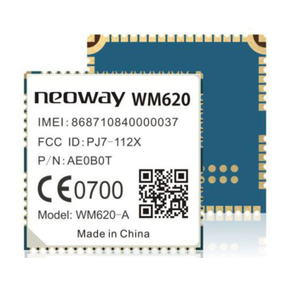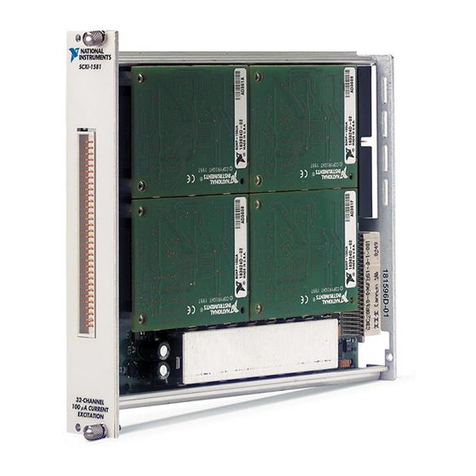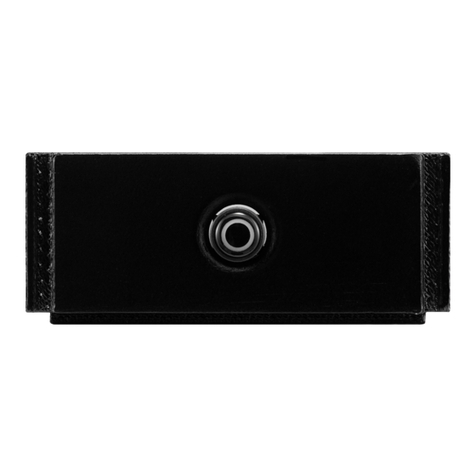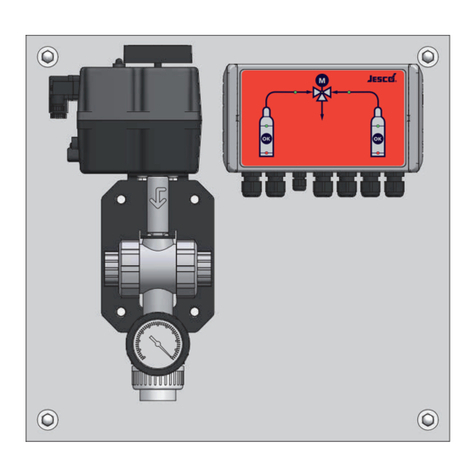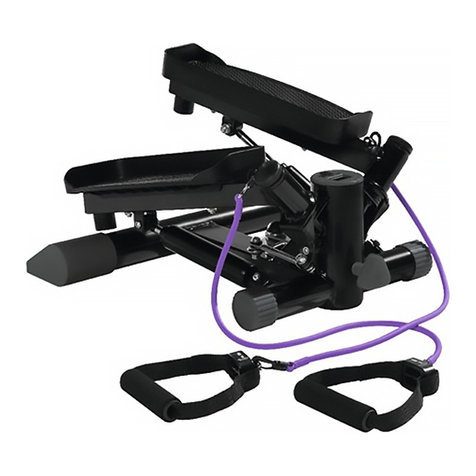Selectone ST-25B User manual

Manual # 600-1501 June 19, 1999
Rev. A - 99038
PRODUCT GROUP
OPERATING INSTRUCTIONS
Model ST-25B
Rolling Code Voice Encryption Module
OPERATION
Operation is almost transparent to the user. The user may select any one
of 4 previously programmed User Code Keys. The user then enables or
disables the transmit cipher mode. Once enabled all subsequent
transmissions will be ciphered using the selected User Code Key.
Ciphered reception is automatic; other units transmitting with the
selected code key will be automatically deciphered. Clear transmissions
will also be received automatically.
Each radio model provides different operational challenges. This is
generally due to availability of unassigned switches or blank panel
space capable of supporting accessory switches. To accommodate
these varying situations the ST-25B provides two modes of operation for
enabling and disabling transmit cipher operation, and making User
Code Key selections.
SWITCHED MODE
This is the default mode of operation, as shipped from the factory.
Clear/Ciphered switching is achieved by a dedicated switch
providing a single closure to (-) Supply. User Code Key selection is
also selected by a dedicated switch providing a binary input to the
two Code Select lines on the ST-25B.
DOUBLE CLICK MODE
This mode of operation is enabled during programming. Operation
with this mode minimizes accessory switch requirements on the
radio. The Clear/Ciphered line is connected to any switch (except
PTT) capable of providing momentary closures to or away from
ground. The switch retains its normal functions; however the user
can toggle between Clear/Ciphered by operating the switch two
times in rapid succession (Double Clicking). The ST-25B will then
provide a tone output to the radio speaker. A high frequency beep
or series of beeps indicate subsequent transmissions will be
ciphered. A low frequency tone for .5 Sec. indicates subsequent
transmissions will be in the Clear (NOT Ciphered).
User Code Keys are selected by operating the same switch four
times in rapid succession (Quad Clicking). Quad Clicking permits
switching between User Code Keys when in the transmit Cipher
Mode (Double Click selection). Each Quad Click transaction
advances the selected User Code Key one step around a loop of
possible selections (Primary, Alt #1, Alt #2, Alt #3, Primary ...).
Following a Quad Click sequence the ST-25B responds with
speaker beeps to indicate the selection position (Primary: 1 Beep,
First Alt: 2 Beeps, Second Alt: 3 Beeps, Third Alt: 4 beeps). When
returning to cipher mode from clear mode, the last used User Code
Key will be selected and indicated with speaker beeps. Following
power-up Cipher operation will select the Primary User Code Key.
Slow switching of this control permits operation in a normal manner
as assigned by the radio manufacturer. Typically this is connected
to the monitor switch, but other switches can be used (freq.
select).
In either mode a visual cipher indicator is available.
INITIAL SYNCHRONIZATION DELAY
All radio systems have an operating delay. This is the time between
PTT activation at a transmitter and speaker audio being available at
the receiving point. This time may vary considerably from system to
system or even from transmission to transmission. For reliable cipher
operation, the ST-25B must wait for this time period before signaling
the beginning of a ciphered transmission. System delays must be
evaluated and accommodated for with the INITIAL SYNCHRONIZA-
TION DELAY parameter.
GENERAL
The ST-25B is a frequency domain rolling code voice encryption device
used to protect the security of two way radio communication systems.
The cipher process uses a proprietary microprocessor controlled analog
scrambling algorithm. Each unit can be programmed with four User
Code Keys, with over 4 billion code keys to choose from. Special
factory set master code key groups are reserved to provide extra security
for special services. Each master code key group has over 268 million
possible code keys. To maintain security, code keys are never
transmitted. Audio processing filters provide high quality low distortion
recovered audio. The small size and low power requirements make it
ideal for portable, mobile, and base station use.
The ST-25C and ST-25B are code-compatible and may be used in the
same system. The only difference between the two units is that the
ST-25C provides a path for CTCSS tones while the ST-25B does not. The
ST-25B should be used when the unit is installed in the receive audio
path after the CTCSS decoder. The ST-25C must be used if the unit is
installed before the CTCSS decoder.
Field programming is accomplished using a PC serial connection, and
Product Manager Software. Product Manager is available on disk from
SmarTrunk at a nominal price, or it is available at no charge on the
Selectone web page www.selectone.com. Product Manager is supplied
as two separate programs for use with Microsoft Windows or DOS.
ST-25PM Windows & DOS based Product Manager
ST-954B RS-232 to Selectone connector adaptor.
Application information is available or can be developed for most radio
models. Documentation on ALL current products and many of our
application notes are available for instant access on our web site
www.selectone.com. If you would like application details for a specific
radio, please call us at (510)887-1950 or request assistance via E-Mail
OPERATING SPECIFICATIONS
SPECIFICATION DETAIL
Encryption: ....................................... 32 bit algorithm
Operating Voltage: .......................... 5.2 Vdc to 16.3 Vdc
Operating Current: .......................... < 8mAdc
User Code Keys: .............................. Greater Than 4 billion
Cipher Algorithm: ............................. Real Time Frequency Domain
Synchronization: .............................. Initial and Maintenance
Usable Audio Level Rx and Tx: .......... 25 mV p-p to 2.0 V p-p
Input to Output Gain: ...................... < ± 1 dB
Frequency Response: ...................... 300 Hz to 2600 Hz
Temperature Range: ........................ -30° C to +60° C
Interface: ......................................... 18 flying leads terminated in a
13 pin low profile connector
Size: .................................................. 0.90 W x 1.50 L x 0.18 H
(22.8mm x 38.1mm x 4.6mm)
IMPORTANT
Note: Operation of radio equipment with encrypted speech capability
may be government regulated. The purchaser of this equipment is
responsible for compliance with applicable radio regulations regarding
operation of this equipment.
Note: Export of this product is under the jurisdiction of the U.S. Depart-
ment of Commerce, Office of Defense Trade Control. An Export
License is Required.

internal DC bias voltages in the transmit audio stages. If this is not
possible, a DC blocking capacitor should be placed in series with this
lead.
[11] RECEIVE AUDIO INPUT (BLUE)
[1] RECEIVE AUDIO OUTPUT (WHITE/BLUE): These two wires should be
connected in series with the receive audio path inside the radio. The
optimum location for connection is directly off the receiver detector
circuit BEFORE any audio processing circuits (de-emphasis). This
connection location will provide high quality audio recovery. Be sure
not to break the audio path between the detector and the squelch
circuit, or between the detector and the CTCSS decoder if one is used.
Also, be sure that the receive audio path is broken next to a DC
blocking capacitor, or in such a location as not to upset any internal
DC bias voltages in the receiver audio stages. If this is not possible, a
DC blocking capacitor should be placed in series with this lead.
Note: In some applications it is impossible to avoid breaking the path
between the detector and the input to the CTCSS decoder. For these
applications it is necessary to use the ST-25C, to permit CTCSS to pass
through the board without being eliminated or ciphered.
[6] PTT INPUT (YELLOW): The PTT Input detects a pull to ground on the PTT
line in the radio set to indicate a transmit condition. To install the PTT
Input line on the ST-25B, connect this wire to the PTT line in the radio set
at a convenient location.
Note: Operation of the ST-25B will be erratic if the PTT input is allowed to
float. If this point floats when the transmitter is not keyed, a pull-up
resistor to Positive (+) Supply must be added.
[10] PTT OUTPUT (BLACK/YELLOW): This lead is not used for this product.
[4] SPK BEEP/CIPHER LED/RS232 OUT (WHITE/ORANGE): Speaker Beep &
Double Click Mode: Speaker beep is vital to operation in this mode. This
lead is the beep output. It may usually be connected directly to the
high side of the speaker. In some applications direct speaker connec-
tion may not be usable. In these cases connect to the input of the
receiver audio amplifier through a series resistor. The value of the series
resistor will have to be determined experimentally.
[8] AMP ENABLE (BLACK/BROWN): Many portables power down the
receiver audio amplifier when squelched.
Double Click Mode: When beep tones are not present this lead is high
impedance. During beeping it is switched to ground through a series
10K resistor. If the receiver audio amplifier is turned off while the receiver
is squelched, this output may be used to enable the amplifier for
speaker beeping.
[2] CODE SELECT 1 INPUT/ RS232 INPUT (VIOLET)
[5] CODE SELECT 2 INPUT (BLACK/ORANGE): When not used as an
RS232 INPUT, these two inputs are used for selecting up to four unique
code keys on the ST-25B. These inputs have pullups to +5Vdc internal
to the uP, and may be left unconnected if only the Primary User Code
Key is to be used. The three Alternate User Code Keys are selected by
connecting these leads to a binary coded switch. The switch must
cause switching to ground (logic low) as indicated in Table 1 (Logic
High = Open, Logic Low = Grounded).
TABLE 1
CODE KEY CODE SELECT 1 CODE SELECT 2
Primary Open Open
Alt #1 Grounded Open
Alt #2 Open Grounded
Alt #3 Grounded Grounded
MOUNTING
Use of a double-sided adhesive pad or an insulating shrink tube
eliminates hardware requirements. When using the adhesive pad,
mount the ST-25B on a clean dry surface, oriented to allow easy routing
of the wiring to the radio and to allow future adjustments should they be
necessary. Press firmly after mounting to ensure good adhesive
contact. Do not touch the adhesive surface or attempt to re-position
after mounting.
ADJUSTMENTS
GAIN SETTINGS
As shipped from the factory, the ST-25B is fully functional for
many applications. However experience indicates the ST-25B
functions best when audio signals internal to the ST-25B are at or
near pre-determined levels. To optimize operation, receive and
transmit levels must be evaluated independently and the proper
gain setting resistors must be installed. Use the following proce-
dures to determine the input level for the receive and transmit
audio paths. The measured levels are for evaluation with TABLE 2.
Use TABLE 2 to select resistors values for optimum operation.
For many radio operators it is difficult to know reliably how long to
wait before speaking in ciphered mode. This can cause loss of the
beginning of a message. The ST-25B can be programmed to
accommodate this problem. For cipher transmissions the ST-25B will
provide all the necessary timing and beep the speaker as a GO
AHEAD and speak indication.
USER CODE KEYS
Of the more than 268 million available code keys, four may be
selected and easily accessed as User Code Keys for each unit.
These may be used to provide different levels of security within a
particular radio system (officers, sergeants, lieutenants, captains).
INSTALLATION
Installation should be done only by a qualified two-way radio techni-
cian. Installation consists of programming, then mounting the unit in the
radio set, and making the electrical connections.
Note: Installation of secure speech equipment is often time consuming
and costly due to the application requirements presented by the radio
equipment. We may be able to provide a substantial cost savings for
installation. Please contact the SmarTrunk Sales Department for details
on factory installation of secure speech equipment.
SmarTrunk supports this product with application assistance via phone
line and with APPNOTES (Application Notes). We encourage use of our
application service to determine hookup. Most radios do not provide an
interface connector for easy installation of voice encryption equipment
as is often provided for CTCSS applications. Radios that are not in our
application library will receive special consideration and may qualify for
sample installation of two units at the Selectone factory for no cost.
Installation requires a minimum of eight external connections. These
connections are Power, Ground, Transmit Audio Input and Output,
Receive Audio Input and Output, PTT Input, and the Clear/Ciphered
Input. The most critical connections are Transmit Audio Input and
Output, and Receive Audio Input and Output. Improper installation of
these connections can result in distorted audio, and the loss of either
high or low frequency voice components.
ELECTRICAL INTERFACE
The following paragraphs describe each of the external connections.
Numbers shown in brackets [#] refer to the connector pin number.
[3] POSITIVE (+) SUPPLY (RED): This wire should be connected directly to a
filtered source of continuous positive DC voltage in the range of
+5.2Vdc to +16.3Vdc. This connection should be made downstream
from the power switch and the power supply filter components in the
radio set. If a regulated source of DC voltage is available, it should be
used. Low level microphone audio is passed through the ST-25B and use
of a quiet and stable source of DC voltage inside the radio set will
reduce the possibility of picking up power supply noise that may affect
audio signals.
[9] NEGATIVE (-) SUPPLY (BLACK): This wire should be connected to a
location inside the radio that will supply a DC power ground return to the
ST-25B. To eliminate ground loops and power supply noise, the ground
return should be the same power supply ground used in the transmit and
receive audio stages.
[7] MONITOR/CLEAR/CIPHERED (BROWN): Double Click Mode: This wire is
used as an input line for the Double Click and Quad Click signal. It is
normally tied to the monitor switch of the radio, however any switch can
be used. The connection point in the radio must switch between logic
states, high (>4Vdc) and logic low (< 1Vdc). The ST-25B analyzes
transition between these levels and is not concerned with the resting
state. This lead is intended to operate in parallel with the existing radio
function without effecting radio operation.
Switched Mode: This wire is used to select the transmit in cipher mode
when pulled to logic low (< 1Vdc). This may be accomplished with an
ON/OFF SPST switch. When this lead is at logic high (> 4Vdc) the ST-25B
will operate in clear mode when transmitting.
[12] TRANSMIT AUDIO INPUT (GREEN)
[13] TRANSMIT AUDIO OUTPUT (WHITE/GREEN): These two wires should
be connected in series with the transmit microphone audio signal path
inside the radio set. The optimum location for connection is directly in
series with the microphone. If the microphone requires bias, then the
audio path MUST be broken downstream of the bias source. In order to
provide the best transmit audio quality, be sure that the transmit audio
signal path is broken BEFORE the pre-emphasis and transmit modulation
limiter circuit. Also, be sure that the transmit audio path is broken next
to a DC blocking capacitor, or in such a location as not to upset any

PROGRAMMING
The ST-25 Product Manager is required to configure this product to
accommodate the specific application requirement.
The Windows based Product Manager ST25.exe installs using normal
Windows installation procedures. This program defaults to use serial port
com2. To use com1 add /1 to the launch command (ST25.EXE /1)
The DOS based Product Manager is included on a separate disk. The
DOS Product Manage 025DOS.exe may be transferred to the working
directory (C:\Select.one), or run directly from the supplied disk.
Many popular Windows programs access serial communications and
lock access to COM ports by any other program, Windows or DOS.
Before running 025DOS.EXE, shut down the computer and reboot in
DOS mode. For DOS operation, press F8 immediately following the report
Starting Windows 95. Select Command Prompt Only.
Note: The security of your system depends on the secrecy of your code
keys. For maximum security, Selectone recommends changing your
code keys often.
ST-25B COMPONENT LOCATOR
The ST-25B uses multi-layer printed circuit boards. Field repair is not
recommended.
Measurements may be made with an oscilloscope or an AC level
meter. For convenience TABLE 2 presents input levels in mV peak
to peak and mVrms.
TABLE 2
Input Level Gain Resistor
mVpp mVrms TX R35 TX R28
From To From To RX R21 RX R4
10 65 4 23 1.1K 1.1K
65 125 23 45 2.2K 2.2K
125 250 45 89 4.7K 4.7K
250 500 89 179 11K 11K
500 1000 179 357 33K 33K
1000 2000 357 714 None None
Receive: Measure the level on the [11] RECEIVE AUDIO INPUT
(BLUE) lead while receiving a full quieting signal modulated at full
system deviation. Use this level to select R21 and R4 from TABLE 2.
Transmit: The RF generated by the transmitter often makes it
difficult to make accurate measurements for the microphone
circuit. Two methods of measurement are presented, the first does
not always produce accurate results. If method 1 does not appear
effective use method 2.
METHOD 1
Key the transmitter and while speaking loudly into the microphone,
measure the Peak to Peak level on the [12] TRANSMIT AUDIO INPUT
(GREEN) lead. Use this level to select R35 and R28 from TABLE 2.
METHOD 2
Disconnect the [12] TRANSMIT AUDIO INPUT (GREEN) from its
connection in the radio. Use an audio signal generator to inject a
1KHz tone into this lead. Key the transmitter and adjust the output
level from the signal generator to produce 2/3 system deviation as
measured on a service monitor. Un-key the transmitter and
measure the output level from the signal generator. Use this
reading multiplied times 4 to select R35 and R28 from TABLE 2.
NOTE: In some cases the output level from the signal generator
may be too low for accurate readings, or the level may be difficult
to adjust. In these cases build a resistive divider with the supplied
11K and 1.1K resistors from the resistor packs. Dont damage the
resistors they may be required as gain resistors. Connect the 11K to
the output of the signal generator, connect the 1.1K to (-) Supply
for the ST-25B, and connect the junction between the resistors to
[12] TRANSMIT AUDIO INPUT (GREEN). Key the transmitter and
adjust the output level from the signal generator to produce 2/3
system deviation as measured on a service monitor. The output
level from the signal generator divided by 10 produces 2/3 system
deviation. Use this reading times 2 to select R35 and R28 from
TABLE 2.
Dont forget to reconnect the [12] TRANSMIT AUDIO INPUT (GREEN)
lead in the radio.
SYNCHRONIZATION LEVEL
During cipher transmissions the ST-25B transmits synchronization
information approximately twice per second. This signal carries no
coding information but is necessary for proper operation. For
optimum performance the synchronization bursts should be
adjusted to produce 1/2 system deviation.
After installation is complete, switch to the cipher mode and key
the transmitter. Using a service monitor with an oscilloscope
display, adjust R24 for a peak reading of ± 1/2 system deviation.
Deviation readings made with a deviation meter may not
accurately measure the intermittent synchronization burst signal. If
proper adjustment is difficult or not possible, the transmit audio
gain may be set incorrectly. Repeat the gain setting procedure for
the transmitter using METHOD 2. If difficulties continue, contact
the Selectone Applications Department for assistance.
WARRANTY POLICY
All Selectone products are guaranteed to meet or exceed published
performance specifications and are warranted against defects in
material and workmanship for a period of two (2) years from date of
purchase. Third party equipment such as radios, power supplies,
antennas, etc., carry the factory warranty of their respective manufac-
turers.
All warranty repairs must be performed at the SmarTrunk factory in
Hayward, California, or other factory authorized repair depot. Any
unauthorized repair attempted by the customer, alteration or modifica-
tion of the equipment, damage by external sources, or removal or
alteration of the serial number label or date code, will void the warranty.
Specifically excluded from this warranty are batteries, fuses, lamps, and
damage caused by lightning, power surges, or mechanical abuse.
Equipment for repair may be returned to the factory without prior written
authorization; however, a note must be sent with the packing list briefly
describing the nature of the defect. Repairs must be shipped freight
prepaid and will be returned freight prepaid. Shipments should be
directed to:
SmarTrunk Systems, Inc.
Attn: Repair Department
23278 Bernhardt Street
Hayward CA 94545, U.S.A.

SmarTrunk Systems, Inc.
23278 Bernhardt Street Hayward, CA 94545-1621 USA
Phone: +1-510-887-1950 - (- Fax: +1-510-887-4011
ST-25B SCHEMATIC
Note:
1. Board layout allows loading R21 and R35 as
surface-mount or through-hole components.
Popular Control Unit manuals by other brands
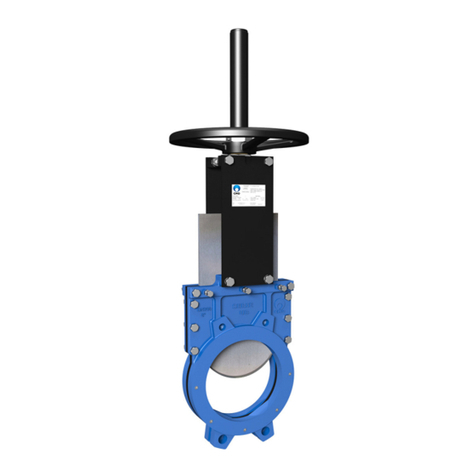
CMO VALVES
CMO VALVES UB Series Instruction and maintenance manual
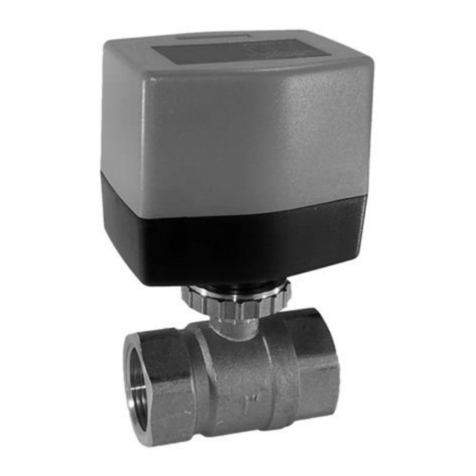
JP Fluid Control
JP Fluid Control BW Series manual

horsch
horsch DrillManager ME operating instructions
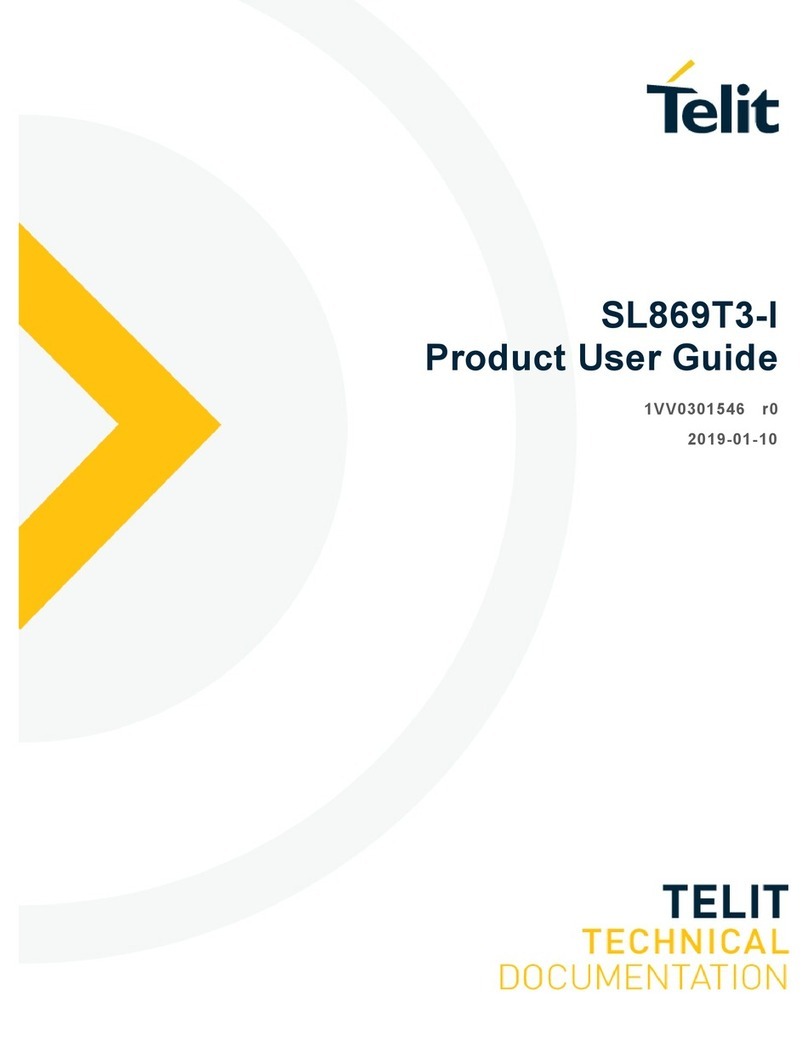
Telit Wireless Solutions
Telit Wireless Solutions SL869T3-I Product user guide
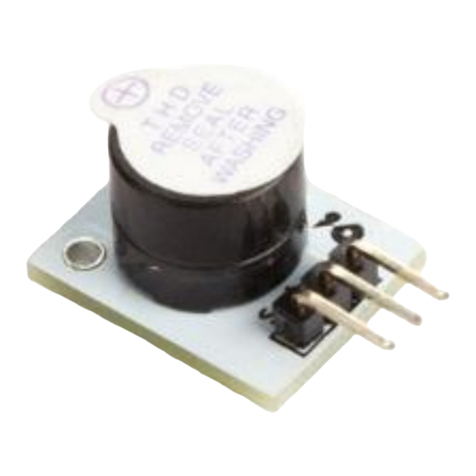
Velleman
Velleman VMA319 user manual
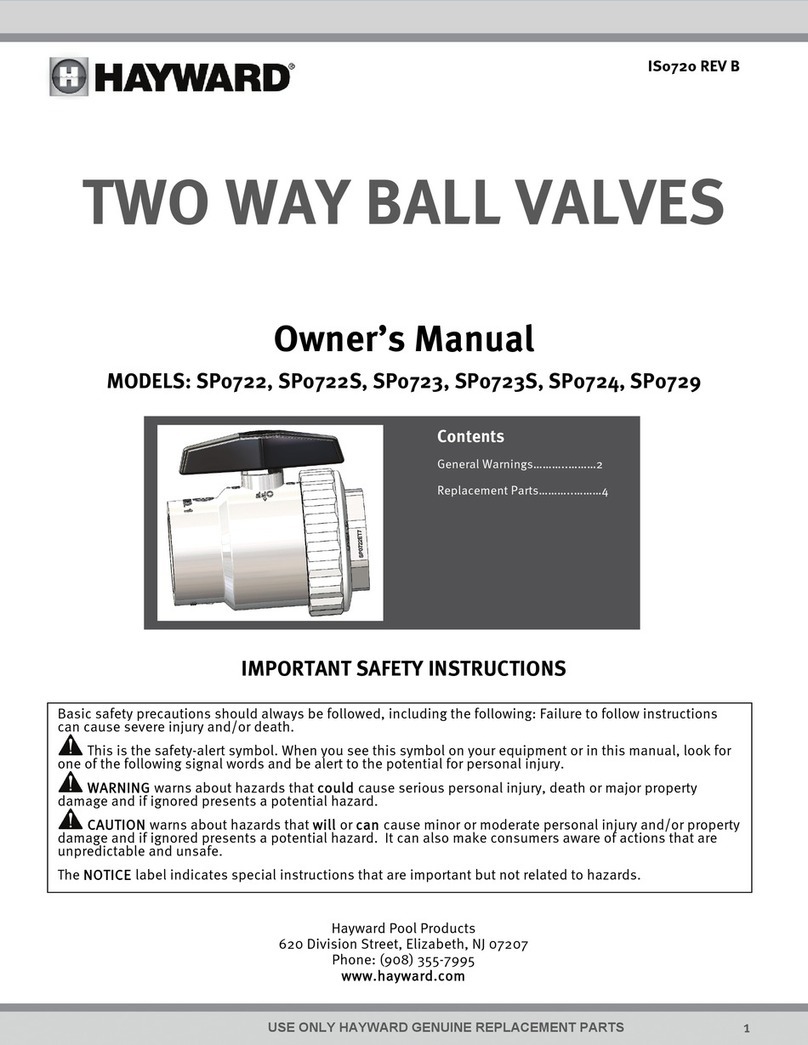
Hayward
Hayward SP0722 owner's manual
